he doge hhs migrant housing contract has become a central topic in today’s discussions about America’s immigration and housing policies. This federal agreement, managed by the Department of Health and Human Services (HHS), ensures that migrants arriving in the United States receive safe and reliable shelter.
It connects federal housing policy with real-life humanitarian needs by providing temporary housing facilities and essential services. Beyond shelter, the contract helps coordinate immigrant support services such as healthcare, education, and food distribution. Understanding how this contract works is crucial for anyone who wants to know the challenges, funding, and future of migrant housing programs across the USA.
Understanding the Doge HHS Migrant Housing Contract
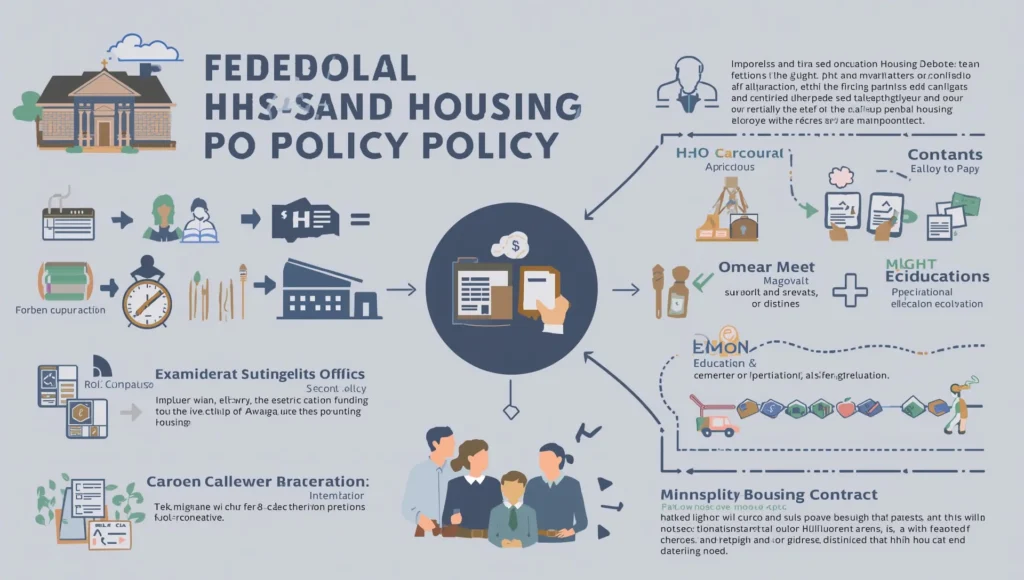
The Doge HHS migrant housing contract is a federal agreement managed by the Department of Health and Human Services (HHS). It aims to provide temporary housing facilities for migrants arriving in the USA. The contract ensures basic needs, safety, and health support for those seeking shelter.
This program is more than paperwork; it is a lifeline. By creating structured housing contract agreements, the government works with private companies and community organizations to deliver secure spaces. The system balances federal housing policy with urgent humanitarian needs.
Why the HHS Migrant Housing Program Matters in the USA

The USA has long faced migrant crisis housing challenges. This program is designed to reduce overcrowding and create humane living spaces. The migrant shelter program helps families transition into communities while receiving health, food, and education support.
For Americans, it also matters because government housing funds impact taxes and local budgets. Transparent handling of the HHS housing support contract builds trust among citizens and strengthens public confidence.
How the Federal Housing Contract System Works
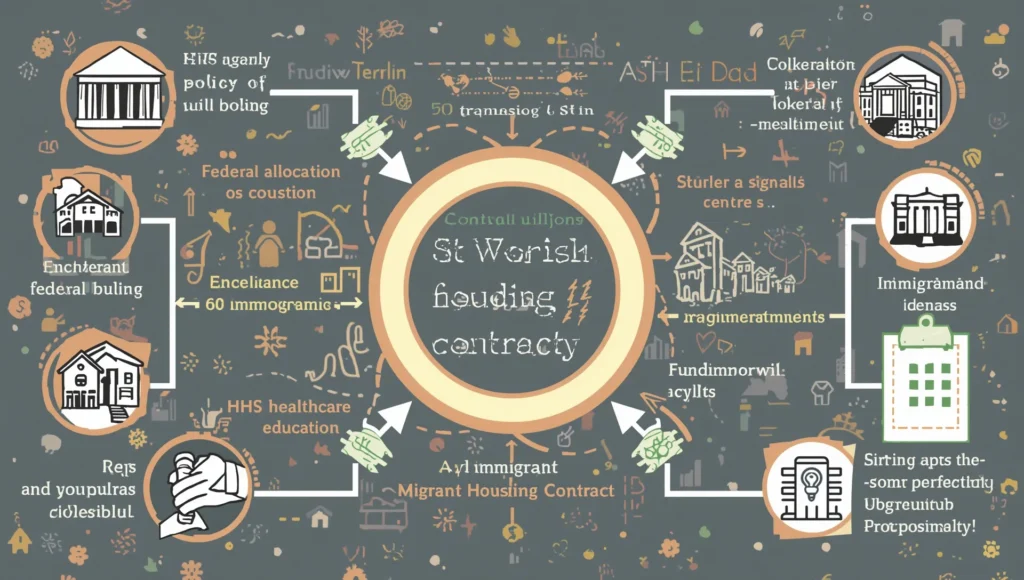
A housing contract process involves bids from contractors to manage migrant shelters. HHS reviews proposals, ensuring they meet standards like food, security, and medical care. Once approved, a legal housing agreement is signed to start operations.
The system links federal shelter management with state and local officials. Contractors must follow strict migrant housing policy USA guidelines, ensuring shelters are fair, safe, and cost-efficient.
Key Contract Requirements
Contracts must include detailed budgets, staffing plans, and housing capacity. Every contract agreement also requires reporting on how funds are used.
Funding and Budget Allocation for Migrant Housing
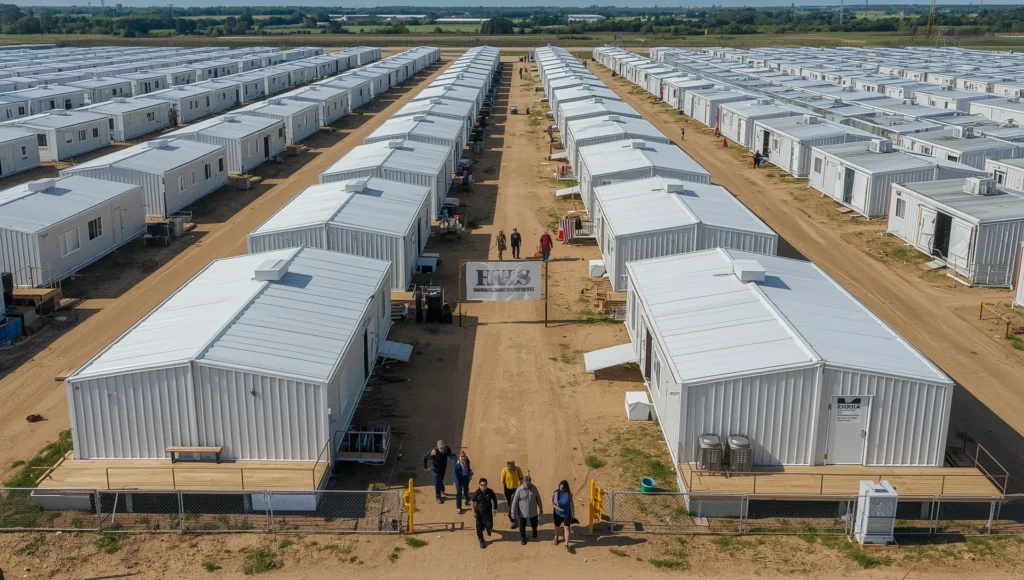
The federal government provides funding allocation housing programs through annual budgets. Billions are set aside for emergency housing contracts each year. Funding covers construction, security, food supply, and staff training.
A major focus is on efficiency. Federal housing policy demands that every dollar supports migrant accommodation programs without waste. This is critical to meet urgent needs when migrant arrivals rise suddenly.
Table: Funding Overview for HHS Housing Programs
| Year | Budget Allocation | Main Use |
|---|---|---|
| 2022 | $3.5 Billion | Shelter operations & food |
| 2023 | $4.1 Billion | Security & staff training |
| 2024 | $4.8 Billion | Expansion of housing units |
Role of Local Communities in Migrant Shelter Support
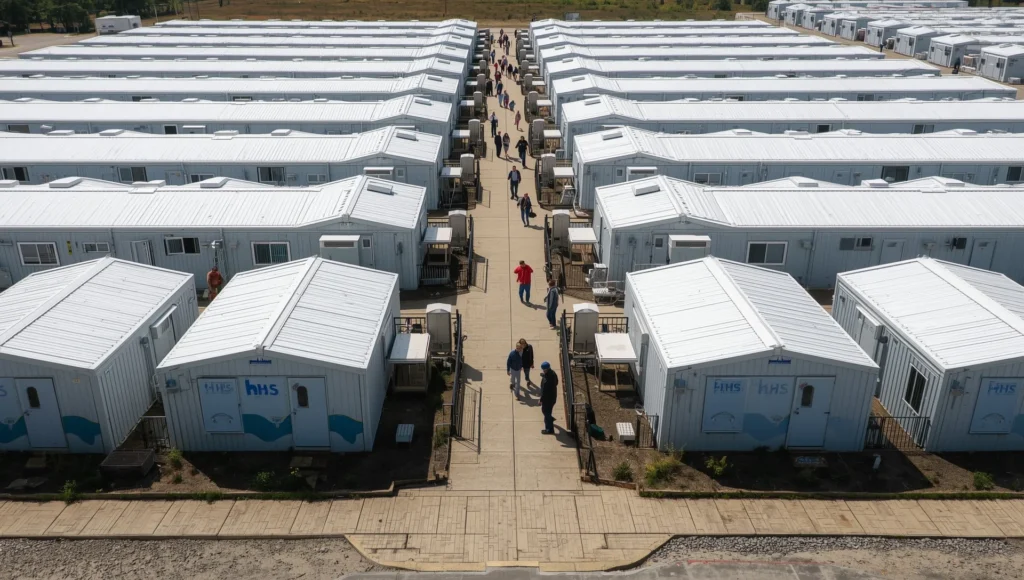
While the federal government funds contracts, local communities provide on-the-ground help. Nonprofits, schools, and clinics support immigrant support services by offering language classes, jobs, and healthcare.
Communities also benefit from partnerships. In some areas, community shelter contracts create jobs and improve local economies, making the program a two-way support system.
Benefits for Migrant Families
Families get access to refugee housing assistance, legal help, and education for children. This ensures smoother integration.
Legal Aspects of the HHS Migrant Housing Contract
The legal housing agreements are designed to protect both migrants and taxpayers. Contractors must meet federal shelter management laws and provide clear financial reports.
Failure to follow rules can lead to contract termination. Migrant housing policy USA ensures that shelters maintain proper standards for health, privacy, and safety.
Government vs Private Housing Roles
Government sets the rules, while private organizations often run the shelters. This balance helps improve efficiency.
Case Studies: Successful Migrant Housing Programs in the USA
In Texas, a migrant accommodation program successfully housed thousands by partnering with local universities for space. In California, immigrant support services worked with shelters to offer training programs for new arrivals.
These case studies show that the Doge HHS migrant housing contract can succeed when federal, state, and local teams collaborate effectively.
Challenges Facing the Migrant Housing Contract System
The biggest challenge is rising demand. Migrant crisis housing often strains available shelters. Lack of space, cultural differences, and political disagreements make things harder.
Another challenge is funding delays. Without timely government housing funds, some shelters cannot provide consistent support, leaving families vulnerable.
Future of Migrant Housing Policies in America
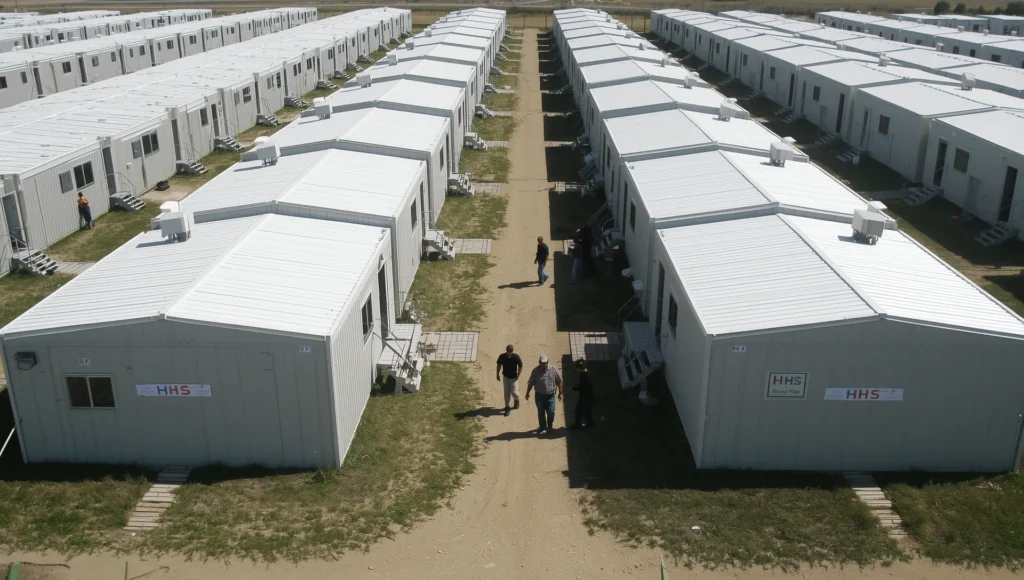
The future depends on stronger partnerships. By improving migrant housing policy USA, the government can expand shelters and provide long-term stability. Technology like smart housing systems may also improve federal shelter management.
Policymakers are considering permanent solutions. The next generation of emergency housing contracts may focus on integration rather than just short-term shelter.
Final Thoughts on the Doge HHS Migrant Housing Contract
The Doge HHS migrant housing contract is vital for managing America’s humanitarian responsibilities. It balances
funding allocation housing, community support, and strict oversight to protect both migrants and taxpayers.
As challenges grow, new policies and better management are needed. With stronger cooperation, the USA can build a fair, safe, and sustainable migrant housing system.
FAQs
What agencies are shut down by Doge?
No official U.S. government agencies have been shut down by Doge; it exists mainly as a cryptocurrency and cultural movement.
What is Doge’s contract address?
Doge (DOGE) does not run on smart contracts, so it has no specific contract address like ERC-20 tokens.
Is Doge still operating?
Yes, Dogecoin is still active, widely traded, and supported by a strong online community.
What chain is DOGE under?
Dogecoin runs on its own native blockchain, independent from Ethereum or Bitcoin.
Is MCC shutting down?
There’s no verified information that MCC (Migrant Contract Company or related entities) is shutting down.
Is DOGE a part of the government?
No, Dogecoin has no connection to any government—it’s a decentralized cryptocurrency.
Who is the founder of DOGE?
Dogecoin was created in 2013 by Billy Markus and Jackson Palmer as a fun digital currency.
Why is DOGE so popular?
Its meme culture, low entry price, and Elon Musk’s endorsements made Dogecoin extremely popular.
Why are Democrats against DOGE?
There’s no official stance; some critics just question crypto’s regulation, not Dogecoin specifically.
Who is Thomas Shedd?
There is no confirmed link between Dogecoin and Thomas Shedd in public records.
How much is the DOGE Department of Government?
There is no real “DOGE Department of Government”; it seems to be a meme or fictional reference.
What is Elon Musk’s new political party?
Elon Musk has not officially launched a new political party as of now.
How is DOGE related to Elon Musk?
Musk often tweets about Dogecoin, calling it “the people’s crypto,” which fuels its popularity.
Who invested in DOGE?
Millions of retail investors, along with public support from Elon Musk and other crypto enthusiasts, have invested in DOGE.




